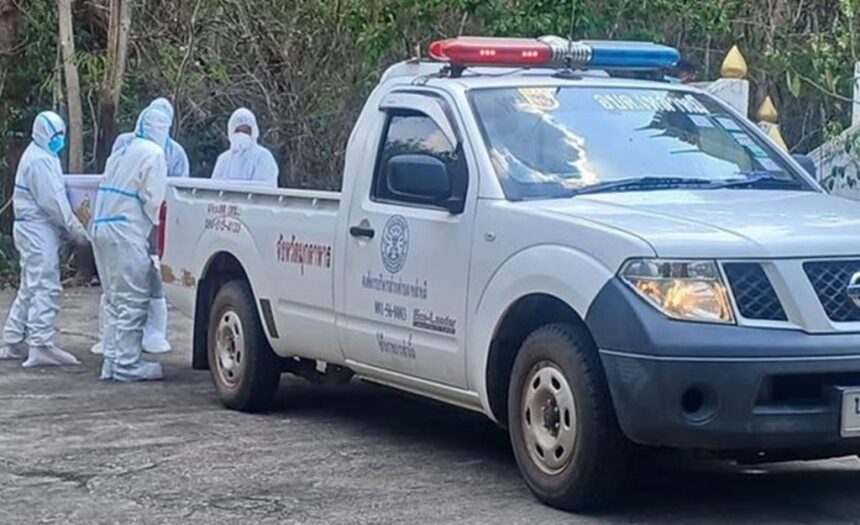A man in Northeastern Thailand has died from anthrax, marking Thailand’s first anthrax-related death since 1994. Health officials report that hundreds of residents may have been exposed to the bacteria, raising concerns across the region.
The 53-year-old man, who lived in the Don Tan district, passed away on Wednesday in Mukdahan province. A second infection has also been confirmed in the same area, while three more suspected cases are being checked, according to Dr Narong Chankaeo from Mukdahan’s provincial health office.
Both the deceased and his friend developed skin sores and rashes on their hands. The friend is currently being treated in the hospital and is expected to recover if no serious issues develop.
Initial investigations suggested that the patient had been exposed after a cow was slaughtered during a religious merit-making ceremony. The meat was later distributed and consumed within the village.
Don Tan district, which is close to the Laos border, is now under strict disease control measures. Last year, Laos reported dozens of anthrax cases. Thai health officers say 638 people in Don Tan might have been exposed, mostly by handling or eating raw or undercooked beef.
All have started a course of doxycycline, an antibiotic used to treat anthrax, which spreads from infected animals to people, but it doesn’t pass between humans. Neighbouring provinces Amnat Charoen, Kalasin, and Nakhon Phanom are also on alert.
Local authorities are advising people to avoid raw beef.
The Department of Livestock Development plans to vaccinate about 1,200 cattle in a 5-kilometre area around the affected village. So far, there are no reports of sick or dead animals.
The last time Thailand saw human anthrax cases was in 2017, but there were no deaths. In 2000, 15 people were infected, also without fatalities. This recent death is the first since 1994, when three people died from anthrax in Thailand.
Rising regional cases have worried health officials. Laos saw 129 infections and one death last year, while Vietnam confirmed 13 cases in May 2023.
Anthrax – Bacillus Anthracis
Anthrax is a dangerous illness mostly caused by the Bacillus anthracis bacterium. This bacterium lives in soil in many parts of the world and often affects farm animals and wildlife.
People can catch anthrax if they touch infected animals or handle products from those animals. Infection can happen if you breathe in anthrax spores, eat or drink something with spores in it, or get spores into a cut or scrape.
Cattle, sheep, goats, antelope, and deer can get anthrax too. They are usually infected when they breathe in, eat, or drink spores from soil, plants, or water that have been contaminated.
The signs of anthrax depend on where and how the infection starts. Symptoms can start as soon as one day after contact, or they may take more than two months to appear. If left untreated, all forms of anthrax can spread through your body and lead to serious illness or even death.
Common symptoms include:
- Itchy clusters of small blisters or bumps
- Swelling around a sore
- A painless sore, often with a black centre, usually found on the face, neck, arms, or hands after blisters fade
- For injection anthrax, deep sores or abscesses under the skin or in muscles where the injection happened
If you’ve come into contact with anthrax, your doctor may suggest the anthrax vaccine or give you antibiotics to stop the disease from developing.
If you think you’ve been exposed, see your doctor as soon as possible and explain how the contact happened. Early treatment gives you the best chance to recover. Doctors can give you antibiotics to stop you from getting sick or treat you if you already have symptoms.
There isn’t a test to confirm if you’ve been exposed to anthrax. Health officials need to investigate to figure out if exposure happened and how it occurred.















